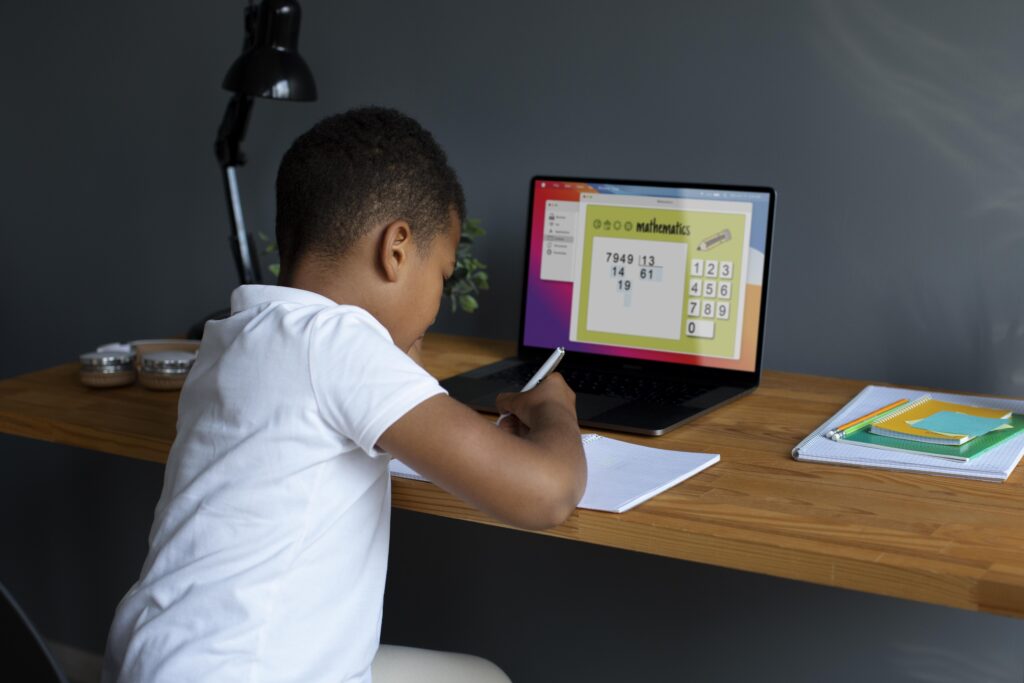Mathematics has always been a subject that sparks mixed emotions among children. For some, numbers are exciting puzzles waiting to be solved. For others, they are intimidating figures on a page that seem to make little sense. The key difference often lies in how math is introduced. When presented in a rigid, rule-based format, many children disengage. But when math is brought to life through storytelling, imagination, and play, it suddenly becomes approachable—even fun.
In today’s world, children are surrounded by stories in every form: books, movies, cartoons, games, and even advertisements. Storytelling is one of the most natural ways humans learn and remember information. By weaving numbers into stories, parents and educators can transform abstract equations into adventures, mysteries, and relatable experiences. This approach makes math less about memorization and more about understanding. That’s why creative teaching strategies, particularly storytelling, have gained traction as one of the most effective tools for introducing mental math for kids in a way that sticks.
Why Storytelling Works in Teaching Math
Children are naturally curious and imaginative. A story gives context to abstract numbers and provides meaning to mathematical problems. Instead of asking a child to simply subtract “9 – 3,” you could tell them:
“Lily had 9 balloons for her birthday. On the way home, 3 flew away. How many balloons does she still have?”
With a story, numbers become characters, and equations become part of a narrative arc. Suddenly, subtraction isn’t about cold symbols—it’s about Lily’s balloons. The child is emotionally invested, which makes them more likely to grasp and retain the concept.
Storytelling also activates multiple parts of the brain at once. It combines logic, language, and visualization, which strengthens connections and memory. When children imagine numbers as part of a story, they learn problem-solving in a holistic way rather than just rote calculation.
Building a Foundation Through Stories
Before diving into advanced techniques, it’s important to understand the types of stories that work best for teaching math. These can be divided into:
- Everyday Life Stories
Numbers are everywhere. From counting apples at the grocery store to sharing cookies with friends, real-world scenarios help children see math as part of daily life. - Fantasy Adventures
Kids love dragons, superheroes, and magical lands. When numbers are hidden inside epic quests—like collecting 12 gems but losing 4 to a troll—children practice math while immersed in imagination. - Mystery and Problem-Solving Stories
A detective trying to solve a case with numerical clues creates a sense of suspense. Children want to reach the answer, and solving equations becomes part of the thrill. - Character-Based Math Stories
Creating recurring math characters—such as “Professor Plus,” “Captain Subtract,” or “The Multiplying Magician”—can anchor concepts in a child’s mind. These characters can reappear in different stories, making learning consistent and fun.
By tailoring stories to a child’s age, interests, and level of mathematical understanding, parents and educators can ensure steady growth in numerical confidence.
Creative Storytelling Techniques to Teach Mental Math
1. The Number Journey
Turn math problems into an adventure map. For instance, if a child needs to solve 5 + 7, create a story where a hero must travel across 5 mountains and then 7 rivers to reach the treasure. The final destination equals the sum of the journey.
2. Story Dice
Use dice with numbers or story prompts. Roll them to create characters and scenarios—then tie in math problems. Example: A child rolls a “4,” “pirate,” and “gold.” You could say: “The pirate had 4 gold coins, but he found 6 more. How many coins does he have now?”
3. Math Comics
Children can draw simple comics where characters face math-based challenges. A robot may need to calculate fuel (multiplication), or a princess might divide apples among friends. Visual storytelling reinforces abstract ideas.
4. Problem-Solving Theater
Act out math stories with toys or puppets. Teddy bears might be at a picnic with 10 sandwiches, and suddenly 3 are eaten. Kids act out the subtraction process, making it physical and memorable.
5. Cultural Folktales with Math Twists
Integrate math into traditional folktales. For example, in “The Three Little Pigs,” each pig might buy a different number of bricks. Kids can calculate totals, differences, and averages, combining cultural heritage with numeracy.
Examples of Story-Based Math Problems
- Addition – A farmer planted 6 apple trees in one row and 4 in another. How many apple trees are there in total?
- Subtraction – A baker made 12 cupcakes. The children ate 5. How many are left?
- Multiplication – There are 3 treasure chests, and each chest has 5 gems. How many gems are there in total?
- Division – Eight birds are sitting on a fence. If they fly away in groups of 2, how many groups are there?
Each of these problems becomes more engaging when wrapped in a fun, character-driven story.
Linking Stories to Cognitive Development
Storytelling in math isn’t just fun—it’s scientifically beneficial. Here’s how it supports cognitive development:
- Memory Retention: Stories give numbers meaning, making them easier to remember.
- Problem-Solving: Children learn to approach challenges creatively.
- Critical Thinking: Stories often involve “what if” scenarios, encouraging flexible thinking.
- Emotional Engagement: Kids care about the outcome of the story, which motivates them to solve the math problem.
These skills go beyond mathematics. They shape overall learning, confidence, and creativity.
How Parents Can Use Storytelling at Home
Parents don’t need to be professional storytellers to use this method. Here are simple strategies:
- Turn Bedtime Stories Into Math Stories – Modify existing stories by adding math challenges. Example: In “Jack and the Beanstalk,” Jack climbs 10 steps, then 5 more. How many in total?
- Use Favorite Characters – If a child loves dinosaurs, superheroes, or cars, create math stories featuring them. Familiarity sparks interest.
- Involve the Child – Ask kids to create their own stories with numbers. This helps them apply math actively rather than just listening passively.
- Daily Routine Math Stories – While cooking, driving, or shopping, turn real tasks into story problems. Example: “We have 3 bananas, and if we buy 4 more, how many will we have for breakfast?”
Classroom Applications of Storytelling in Math
Teachers can also integrate storytelling in classrooms with great effect:
- Math Story Corners: A dedicated space where children solve math-based storybooks or puzzles.
- Collaborative Storytelling: Students create group stories with math challenges, fostering teamwork.
- Role-Play Lessons: Teachers act out math adventures, turning the classroom into a stage.
- Math Journals: Students write or draw short math stories in notebooks, combining literacy and numeracy.
This approach bridges the gap between subjects, showing students that learning is interconnected rather than isolated.
Technology and Storytelling in Math
Modern tools make storytelling even more powerful:
- Math Story Apps: Digital apps where children solve math puzzles to move through stories.
- Interactive Whiteboards: Teachers can illustrate math adventures live.
- Animation Tools: Kids create digital cartoons with math problems woven into the plot.
- Gamified Learning: Platforms that turn math into quests and challenges keep children engaged longer.
The fusion of storytelling and technology prepares children for a digital future while keeping math enjoyable.
Common Challenges and How to Overcome Them
- Short Attention Spans – Keep math stories brief and exciting. Use characters and visuals to maintain interest.
- Balancing Fun and Learning – Ensure stories aren’t only entertaining but also focus on the math concept. The goal is learning through fun, not distraction.
- Varying Skill Levels – Adjust stories to suit the child’s level. A Grade 1 student may focus on addition, while older children can explore multiplication and fractions.
- Parental/Teacher Hesitation – Some adults feel they aren’t “creative enough.” Remember: even the simplest story—a child sharing toys with friends—can become a powerful math lesson.
Long-Term Benefits of Storytelling in Math
When children grow up with math stories, they:
- Develop stronger mental agility.
- See math as part of everyday life, not just schoolwork.
- Build confidence in solving problems independently.
- Learn to enjoy the process of discovery, not just the result.
This mindset is crucial not only for mathematics but also for future challenges in science, technology, and life in general.
Final Thoughts
Math doesn’t have to be a subject that sparks fear or boredom. By weaving numbers into stories, educators and parents can ignite curiosity, engagement, and joy. Storytelling transforms abstract problems into relatable, exciting adventures, turning the learning process into something memorable. Whether it’s through bedtime stories, classroom role-play, or interactive apps, the key is to give children a reason to care about the outcome of a problem.
In the end, storytelling with numbers is not about replacing traditional teaching but enhancing it. When combined with practice and creativity, it equips children with both numerical skills and imagination. That’s the true beauty of teaching through stories: it doesn’t just prepare children for math—it prepares them for life. And for young learners just beginning their journey, there is no better way to introduce mental math for Grade 1 than through stories that make numbers come alive.








Leave a Reply